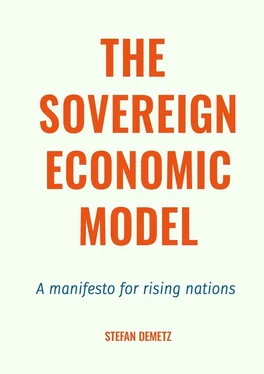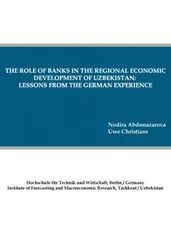Competition or merges between SOEs is a point that needs to be analyzed. Some countries have multiple state-owned enterprises in one sector: multiple banks, multiple industries, or multiple utilities competing in a market. Sometimes it makes sense to completely merge them or to bring them under the roof of one holding group to manage them under one policy. In other instances, it is advisable to keep them separate because their core functions are different. Competition among multiple SOEs for the same customer does not make much sense because a large amount of time, financial resources, and political intrigue are spent on competition instead of on improving the offering. In these cases it is better to rationalize and merge these strikingly similar businesses. In addition, consolidation of SOEs can bring big cost savings, especially if they are large. Either a total merge or a common management as subsidiaries of a large conglomerate can make many processes and decisions much faster and highly efficient. A larger aggregated size likewise helps to fend off competition from private and foreign businesses. It also adds to the enterprise’s credibility for exporting goods and services abroad. Both China and Russia have merged and rationalized different SOEs into large conglomerates in the fields of energy and manufacturing. This makes them gain critical mass and reduces costs. Russia has merged hundreds of related firms into conglomerates in aviation, shipbuilding, engine and turbine manufacturing, and other sectors. This consolidation has allowed distributed single businesses to become increasingly productive as part of a conglomerate and work together under one umbrella to bring new products to life.
In the final analysis, well-managed state-owned enterprises can provide a stable economy and can also create growth and prosperity no less efficiently and effectively than private businesses.
State Capitalism Investment Models
A sovereign country should primarily use its economic policies to create the right foundations for business. But it can also use various tools to fund its development. These tools can be funds, SOEs, or agencies.
Sovereign wealth funds are special funds accumulated by a country, usually by oil-rich nations in the Middle East, Norway, and Russia. In most cases these funds are simply intended to optimize returns, that is, to make the most efficient investments anywhere around the globe, and thus operate just like an investor. Sometimes they are mixed. In addition, they invest internally, meaning they finance business in their home country. For example, in Russia, the sovereign wealth fund RDIF invests and co-invests mainly internally. The most prominent example of its investment is the Sputnik V vaccine for COVID-19.
SOEs have historically been tied to energy, i.e., oil and utilities, probably because these industries are critical to state budgets. While in the West these have been mostly or partly privatized, in many countries state-owned utilities are the norm. In developed countries, few state-owned companies exist, while in emerging countries they are common. As a paradox, historically, the biggest growth seems to have happened while the state had a larger ownership of entire industries, both in Europe and in Asia.
The state itself, through its government, can influence business with economic policies, taxation, regulation, and permits. In fully deregulated capitalist countries, the government does not pose many obstacles to business. It even supports the largest companies. Usually the government has to step in if a critical business suffers significant losses or faces bankruptcy. However, in state capitalism, the state heavily regulates some sectors of the economy, owns or controls extensive business, and effectively has a de facto monopoly on strategic industries.
State capitalism allows a country to move a huge amount of resources to implement a plan. The state can move state-owned companies, sovereign funds, and internal funds to support an industry. This combination of finance, labor, and technological skills makes it easier to complete large-scale projects. Imagine a railroad infrastructure upgrade: the state provides financing, a sovereign fund attracts foreign co-investment, state and private companies provide the technology (fast trains, management systems), and state-owned or private construction firms manage the project.
State capitalism has its own mechanism for investment. Investment strategies prioritize long-term improvement of the general economy. Infrastructure, employment, and internal development of industrial and technological market sectors and solutions are investment solutions that spend the money within the country. Comparatively, unbridled capitalism is not about raising the tide to lift all boats, as it is more self-centered and the benefits are restricted to each individual company.
State capitalism is not a silver bullet for all sectors of the economy. These are the areas where state capitalism can best be applied to market sectors:
• Power engineering (electric, nuclear)
• Military-industrial complex
• Banking
• Chemicals (including fertilizers)
• Pharmaceuticals (partial)
• Public utilities
• Mining and metallurgy
• Ports and logistics
• Railways
The telecommunications sector should also be controlled by the state because a telecom network is a fundamental part of the infrastructure for the internet and data transmission. Here, state control of the physical grid network is of paramount importance. Besides promoting state security, it may help domestic companies that produce telecom equipment if such constraints are introduced. Private companies can, together, be minority shareholders of the physical infrastructure. On the business side, they operate as virtual operators and take charge of the service aspect for consumers.
The sovereign economy described in the Sovereign Economic Model also controls the food-distribution system and, consequently, the largest supermarket chains. Such food distribution networks are controlled by the state, but with the participation of all food producers as shareholders and suppliers. In Sweden, alcohol is sold at the retail level only in government-owned retail chains. In other countries, like the UK, Italy, and Switzerland, many cooperatives are running supermarket chains.
On the whole, investment models in state capitalism can provide sound economic progress and in some cases are more dynamic than very large companies. In the best-case scenarios, they are the start of an avalanche, as besides the initial state-backed investment vehicle, academia, SOEs, and even private companies can also get involved.
Control of Assets: State vs. Private Property
One process a sovereign country must engage in is control of the most strategic sectors of the economy and systemic companies. Many companies are in private hands, so how can a state achieve control? A government has many levers, especially the legislature and law enforcement. A government may create laws to nationalize companies or to put so many sticks in the wheel that the business becomes less attractive to investors or even becomes unviable in private hands.
Re-nationalization or reverse privatization can be options for regaining lost assets. Where assets were privatized using illegal methods, such as bribes, a state can nationalize a business without compensation. In addition, gross negligence and tax avoidance or evasion are good reasons for a state to seize the business. Here, a state might pursue de-privatization by purchasing a controlling or golden share of a company on the open market or through a direct acquisition. The owners are compensated or given incentives to cede control. If a company is struggling with financial debt, the company itself is sequestered by the government and nationalized or bought during bankruptcy proceedings.
Читать дальше












